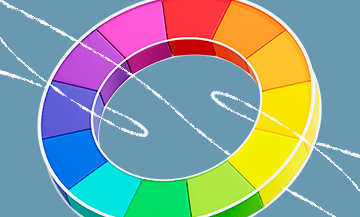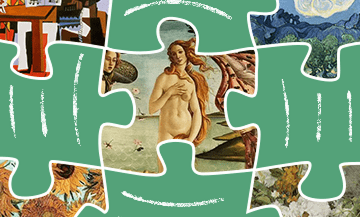Creative imagination is important in every person’s life. It not only helps to achieve personal and professional goals but also enriches life, making it brighter and more interesting. One of the most inspiring examples of how the development of creative imagination can change a person’s fate is the story of Walt Disney.
When Walt Disney was young, he dreamed of becoming a journalist and got a job at a newspaper. However, after a few months, he was fired for a lack of imagination. This failure could have crushed his spirit, but Disney did not give up. Instead, he directed his creative efforts into animation, which eventually led him to success and recognition as one of the greatest animators in history. Walt Disney’s creativity has gifted the world with a magical realm of stories that are enjoyed by both adults and children to this day.
This story perfectly illustrates how important it is not to give up, to develop, and to use one’s creative imagination. In this article, we will explore various methods and exercises that can help develop creative imagination in both children and adults, opening new opportunities for self-expression and success.
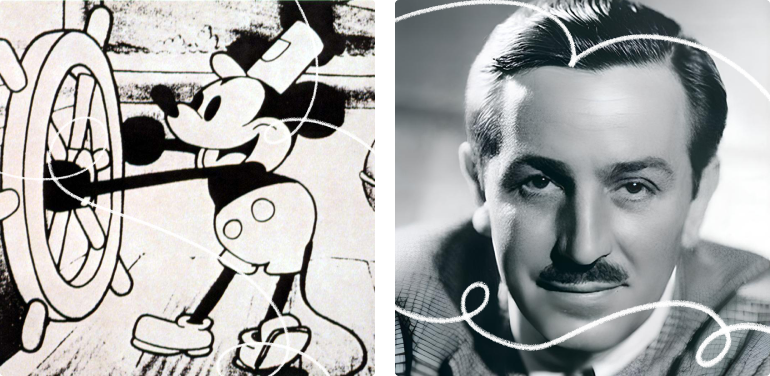
The essence and properties of imagination: creating new images
Imagination is the process of creating new images that a person has not seen in real life, based on previous experiences and creative thinking. Imagination has a significant impact on the intensity of emotions and feelings, and it is also an important factor in the development of human personality.
Imagination allows a person to go beyond ordinary experience, anticipating the future and creating new ideas. Lev Semenovich Vygotsky, a prominent psychologist, said:
“Imagination is a necessary and integral part of thinking, as thinking always involves processes of forecasting and anticipation.”
Imagination has several important properties that make it an indispensable tool in creative and intellectual development:
- Imagination is formed based on accumulated experience, knowledge, and perceptions. New images arise as a result of processing and combining already known elements.
- Imagination can evoke strong emotional reactions. The process of creating and visualizing new images can generate joy, inspiration, fear, or anxiety, which is important for emotional development.
- Imagination develops under the influence of expanding horizons, accumulating experiences, familiar images, and information. The more a person learns and experiences, the richer their imagination becomes. The development of imagination is emphasized from early childhood: many children’s games, preschool, and primary school exercises focus on it.
- Imagination is not constant. Periods of decline alternate with periods of inspiration. It is scientifically proven that inspiration and fresh ideas often come during the process of work, after a certain amount of effort. This highlights the importance of regular practice and persistence in creative activities.

Imagination is used in various areas of life. In scientific activity, imagination helps in creating new hypotheses, models, and technologies; in art – in developing new plots, characters, compositions, and styles; in education – in using innovative teaching methods and developing educational programs. Imagination is an integral part of business when generating new ideas, products, and strategies for company growth.
In summary, imagination is a powerful tool that allows a person to create something new and foresee the future. It plays a key role in emotional and intellectual development, as well as in various aspects of human activity. To think creatively and develop imagination, one needs to constantly broaden their horizons, accumulate new experiences, and regularly practice acquiring new skills. This will help achieve new heights in personal and professional growth.
Conditions and methods for developing creative imagination in people of different ages
The development of creative imagination requires a systematic approach. For imagination to be original, it is necessary to use various techniques and broaden the range of concepts that can be utilized during the process of fantasizing. For example, it is important not only to guide a child in finding creative solutions but also to encourage their independence, provide new materials for creativity, and not stifle spontaneous self-expression. Let’s look at the main methods for developing creative imagination at different age stages.
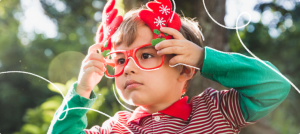
Preschool Children
At this age, children actively explore the world around them and learn through play. Their thinking is characterized by visual and practical activity, and they tend to fantasize and often create images that have no direct relation to reality. Children at this stage enjoy experimenting with materials and forms, which makes their creativity bright and unusual.
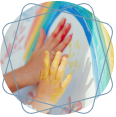
Visual Arts.
Drawing is one of the first means of self-expression for children. Even at an early age, children draw simple figures, giving them specific meanings. As they grow older, their drawings become more detailed and less abstract. Drawing helps to better understand the child. To stimulate creative imagination, tasks such as completing a drawing from dots or without them can be used. Using unconventional drawing methods, such as sponges, fingers, or palms, encourages children to experiment and discover new possibilities. This helps them see the unusual in familiar things and develops their imagination.
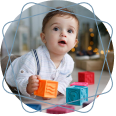
Didactic Games.
Didactic materials also contribute to the development of imagination in preschool children. Using various pictures and active games with objects, as well as verbal tasks like imagining how a story ends or what happens next, helps children view familiar things in a new way. Didactic games promote the spontaneous flow of the creative process and the development of imagination.
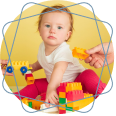
Construction.
Building blocks allow children to create new inventions by combining parts in different ways. Construction develops imagination, spatial thinking, perseverance, and patience. Using modeling clay or dough for sculpting also contributes to the development of creative abilities, allowing children to experiment with shapes and implement their ideas.

Music.
The development of creative imagination requires a systematic approach. For imagination to be original, it is necessary to use various techniques and broaden the range of concepts that can be utilized during the process of fantasizing. For example, it is important not only to guide a child in finding creative solutions but also to encourage their independence, provide new materials for creativity, and not stifle spontaneous self-expression. Let’s look at the main methods for developing creative imagination at different age stages.
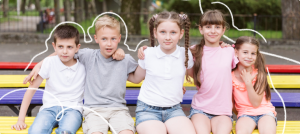
Children Aged 6-7
At this age, children begin to develop analytical and logical thinking. They become more attentive and capable of focusing on one task for a longer period. Their imagination is still active but begins to take on a more structured and conscious character.
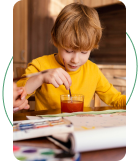
Drawing and Creativity.
At this stage, it is important to continue developing drawing skills by offering more complex tasks and techniques. Children can draw more complex plots using a variety of materials and tools. It is important to encourage experiments with different techniques, such as watercolor, gouache, or pastel, as well as using new approaches like collages.

Verbal Creativity.
At this age, children begin to better perceive verbal tasks and actively use them to develop imagination. Reading fairy tales and stories, discussing their plots, and creating their own stories contribute to the development of creative thinking and imagination.

Role-Playing Games.
Role-playing games help children develop imagination by putting themselves in different roles and creating new situations. This can include scenarios like a store, a hospital, a picnic, and other plots. Role-playing games allow children to better understand the adult world, develop social skills, and creative thinking.

Adolescence
Teenagers have developed analytical abilities and begin to form their own views of the world. Their thinking becomes more abstract and critical. During this period, it is particularly important to support their desire for self-expression and independence.

Visual and Applied Arts.
It is important to provide teenagers with opportunities to engage in various forms of art, such as painting, sculpture, photography, or design. This helps develop their creative abilities and allows them to express their thoughts and feelings through art.

Literary Creativity.
Writing stories, poems, and essays helps teenagers develop imagination and creative thinking. It is important to encourage them to participate in literary contests, creative clubs, and workshops.

Music and Theater Clubs.
Music and theater play an important role in the development of imagination in teenagers. Participation in musical ensembles or choirs, theatrical performances, or dance groups fosters creativity and self-confidence.

Adults
Adults often face routine tasks and stress, which negatively affects their creative abilities. However, imagination in adulthood can be maintained and developed through active engagement in creative activities and finding new hobbies.

Creative Hobbies.
For adults, developing creative imagination can be supported through various hobbies, such as drawing, photography, music, crafts, or writing. It is important to find time for activities that bring joy and allow for self-expression.

Courses and Workshops.
Attending courses and workshops on topics of interest helps adults broaden their horizons and acquire new skills. This can include painting, cooking, dancing, or any other form of creativity.

Travel and New Experiences.
Travel and exposure to new cultures contribute to the development of imagination in adults. New experiences, unusual places, and people stimulate creative thinking and inspire new ideas.

Professional Development.
For adults, it is also important to develop creative imagination in the professional sphere. This involves participating in creative thinking training, brainstorming sessions, and other activities aimed at generating new ideas and solutions.
The development of creative imagination is a process that requires constant attention and effort at every stage of life. Using various methods and techniques helps to unlock creative potential and allows people to reach new heights in personal and professional growth. Regardless of age, it is important to encourage creativity, experiment, and discover new horizons.
Basic manipulations of creative development: what is it, why are they needed and how to use it?

Creative development manipulations are methods and techniques aimed at stimulating and developing creative thinking. They help people find unconventional solutions, generate new ideas, and express themselves through various forms of creativity. These manipulations are important for both children and adults, as they contribute to personal growth, improve cognitive abilities, and enhance emotional well-being.
Why are creative development manipulations necessary?
Several reasons are cited.
Firstly, creative manipulations improve thinking, memory, and attention, and contribute to the development of analytical and abstract abilities.
Secondly, creative activities help express emotions, cope with internal conflicts, and manage stress.
Thirdly, participating in collective creative processes enhances communication and collaboration skills. Another reason is self-expression and self-esteem. Creativity allows people to express their individuality and boost their self-confidence.
Let’s list the main creative development manipulations

Exploring New Areas.
What it is: exploring new topics, acquiring new skills, and finding interests.
How to use it: foster curiosity and a desire for knowledge, engage in new activities such as learning a foreign language, mastering a musical instrument, or participating in art courses.
Example: studying painting can help a programmer design a more intuitive interface for their application, as they will begin to better understand visual perception and composition.

Brainstorming.
What it is: a method of generating ideas either collectively or individually to overcome creative blocks and find unconventional solutions.
How to use it:
- clearly define the problem or task that needs to be solved;
- include people with different perspectives and experiences in the team;
- ban criticism of ideas during the generation phase, encourage all suggestions;
- allow each participant to freely express themselves: all ideas are recorded without evaluation;
- after the brainstorming session, select the best ideas for further development.

Incubation.
What it is: consciously postponing a problem or task for a period of time to allow subconscious analysis.
How to use it: take regular breaks from working on tasks, engage in other activities, allowing the subconscious to find new solutions.
Example: many great inventions were made during moments of rest or distraction. For instance, an idea for a novel may come during a walk or while exercising.

Reflection and Feedback.
What it is: analyzing your experience and receiving feedback.
How to use it: regularly analyze your actions and results, seek opinions from others to identify strengths and weaknesses, and guide further development. Ask yourself questions like:
- What new things did I learn today?
- What difficulties did I encounter and how did I overcome them?
- Which ideas were successful and which were not? Why?

Working with Metaphors and Analogies.
What it is: using comparison and transferring meaning to understand and solve problems.
How to use it: apply analogies to explain complex concepts through familiar images, which helps in finding new approaches and ideas.
Example: comparing a business process to the functioning of a living organism can help identify weaknesses and improve efficiency.

Developing Observational Skills.
What it is: the ability to notice details and connections between phenomena.
How to use it: daily record observations of the surrounding world, play attention and memory games, and spend more time in nature observing its changes.
There are specific features and differences in creative development manipulations for different age groups.
For preschoolers, creative development involves playful exercises.
Recommendation: use drawing, construction, musical activities, and role-playing games. For example, encourage the child to draw with fingers or sponges, and use building blocks to create imaginative structures.
For younger school-age children, increase the complexity of tasks.
Recommendation: offer more challenging drawing and construction tasks to develop creative imagination, encourage verbal creativity, and create stories and fairy tales together with the child.
With teenagers, diversify creative forms.
Recommendation: involve teenagers in various forms of art, such as painting, sculpture, music, and theater. Support their literary creativity, encourage participation in contests and workshops.
What methods can adults use to develop creative thinking?
Engage in creative hobbies, attend courses and workshops, travel and explore new cultures, integrate creative thinking into professional activities, and participate in brainstorming sessions and training.
Creative development manipulations play a key role in personal and professional growth for people of all ages. Using various methods and techniques helps unlock potential, improve cognitive abilities, emotional state, and social skills. Regardless of age, it is important to find new ways for self-expression and development.

6 exercises to develop imagination
There are six different exercises that can stimulate creative imagination, develop creativity, and improve cognitive skills. These will be discussed.

The first exercise: come up with a title and description for a painting.
For this exercise, you can visit a modern art museum or find a gallery of surrealist artists online. It’s important that the painting is not realistic and obvious in content. Carefully examine the artwork and come up with a title and plot for it. Works by Salvador Dalí or Pablo Picasso are well-suited for this. This exercise helps develop abstract thinking and interpretative skills. It is suitable for both teenagers and adults.

The second exercise: solving visual puzzles or doodles.
Doodles are concise images that can be interpreted in various ways. These images have no correct answer, and the more interpretations you find, the better. This exercise stimulates creative thinking and helps to see the world from different perspectives. This task will be interesting for both children and adults.

The third exercise: inventing biographies for passersby on the street or passengers on public transport.
While observing people on the street or in public transport, try to come up with their biographies. Try to include as many details as possible: their family, education, job, etc. This exercise develops empathy and imagination, allowing you to better understand and envision the lives of others.

The fourth exercise: “burime” or collective poetry writing.
“Burime” is a popular game that is also an effective exercise for developing creative potential. One participant writes a few rhyming lines, then folds the paper so that only the last line is visible, and passes it to the next participant. At the end, all the lines are read aloud together, creating a unique poem. This exercise develops creative thinking, a sense of rhythm and rhyme. It is suitable for teenagers.

The fifth exercise: Charades.
This well-known game for lively groups is an ideal exercise for creative imagination. One participant whispers a word to another, who must explain the word to the rest of the participants using gestures. This exercise helps develop non-verbal communication skills and creative thinking in teenagers.

The sixth exercise: Pictionary.
This popular game has many variations. In the classic version, players must draw, act out, or describe a word written on a card. This exercise develops creative thinking, communication skills, and teamwork abilities. It is suitable as a team-building activity for professional groups.
Regularly performing these exercises helps develop imagination and creative thinking in people of all ages. These methods not only promote cognitive development but also make the process of learning and self-improvement engaging and enjoyable.
Features of creative imagination as a mental process
Creative imagination is an active process of cognition that plays a significant role in everyone’s life, especially that of a child. Imagination and fantasy are key aspects that require special attention and development from an early age.
Imagination can function even during sleep, as dreams are a result of unconscious brain activity. During sleep, the brain continues to work, processing information received throughout the day and creating various images and scenarios. This process demonstrates the power of imagination, which is capable of building complex and sometimes illogical worlds based on our experiences, emotions, and memories.
There are several types of imagination, each of which plays a unique role in our lives. One such type is reconstructive imagination. It helps to envision a familiar phenomenon or object and reproduce it in the mind with a high degree of detail. This type of imagination is important for the learning process, as it allows for the reinforcement and reproduction of acquired knowledge and skills.
However, when discussing creative imagination, we refer to originality and novelty of the result. Creative imagination goes beyond mere reproduction of familiar images and phenomena. It involves independently creating new images, without relying on existing descriptions or illustrations. This process requires a high level of creativity and abstract thinking.
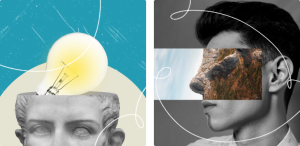
Creative imagination plays a crucial role in innovation and societal development. It enables artists to create unique works of art, writers to invent entire worlds and captivating stories, and scientists and engineers to develop new technologies and solutions. In business, creative imagination helps find unconventional approaches to problem-solving and develop innovative products and services.
The development of creative imagination begins in childhood and continues throughout life. In childhood, it actively develops through play, drawing, storytelling, and other activities that stimulate creative thinking. In adulthood, the importance of creative imagination does not diminish—it remains essential for professional and personal growth.
Creative imagination is an integral part of personal development. It helps children and adults better understand the world around them, cope with life’s challenges, and find new ways of self-expression. Regular development of imagination contributes to improved cognitive and emotional skills, making it a crucial element in education and personal growth.
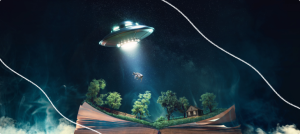
The benefits of a developed creative imagination and new opportunities
The benefits of developing creative imagination are evident and multifaceted. Let’s list the main advantages.

Understanding the surrounding world.
Imagination allows both children and adults to model various situations in their fantasies that differ from everyday life. This helps gain invaluable emotional and intellectual experience.

Educational activity.
Developed creative imagination is essential for successful learning. A lack of imagination can hinder understanding of school or university curricula, as the educational process is based on the representation of learning situations.

Overcoming life’s difficulties.
Imagination helps people cope with difficult life situations that inevitably arise from time to time. Additionally, a person with developed creative imagination can find unconventional solutions to various problems. Creative thinking allows for quick adaptation to new conditions and finding original solutions to challenging situations.
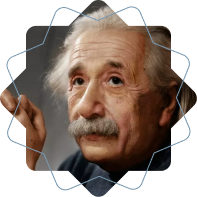
Foundation for future achievements.
Creative abilities are developed in childhood. Without the development of these skills, technological progress and cultural advancement would be impossible. Most outstanding scientists and writers received the necessary foundation in their youth. For example, childhood interests and fantasies laid the groundwork for Albert Einstein’s great scientific discoveries, and J.K. Rowling drew inspiration from her childhood and early experiences.

Communication and social skills.
Imagination fosters the development of empathy and the ability to understand other people. It helps to put oneself in another person’s place, which improves communication and interaction within a team.

Professional growth.
In many professions, such as design, marketing, science, and technology, creativity and the ability to generate new ideas are key qualities. Developed imagination allows one to stand out among colleagues and achieve greater success in their career.
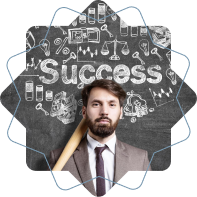
Self-development and self-expression.
Creative imagination helps people find new ways of self-expression through art, literature, music, and other forms of creativity. This contributes to personal growth and life satisfaction.

Motivation and inspiration.
People with developed imagination often experience a higher level of motivation and inspiration. They are capable of dreaming and setting ambitious goals, which helps them achieve great heights in various areas of life.

Stress management and emotional well-being.
Imagination allows for the creation of positive mental images and scenarios, which helps to cope with stress and maintain emotional balance. This improves overall mental health and quality of life.
The development of creative imagination opens up many opportunities and advantages, making life richer and more interesting. It is an important aspect of personal growth that contributes to success in education, career, and everyday life.
Conclusion
Creative imagination not only helps to better understand and perceive the surrounding reality but also serves as a powerful tool for problem-solving, overcoming life’s difficulties, and achieving goals.
In early childhood, imagination forms the foundation for further intellectual and emotional development. The ability to fantasize and create new images opens up endless possibilities for self-expression and exploration of the world. For teenagers and adults, creative imagination becomes an important resource in education, professional activities, and personal life.
It is also important for adults to continue developing their imagination to maintain mental flexibility and remain open to new ideas. Various exercises, such as solving visual puzzles, composing poetry, or participating in creative games, can be effective methods for maintaining and enhancing creativity.
The development of creative imagination requires ongoing effort and attention, but it brings immense benefits and opens up broad horizons for self-realization and achieving goals.
Question and answer
- sleep (especially REM sleep), when imagination operates in an unconscious state;
- physical activity, which provides the brain with oxygen;
- healthy nutrition with the intake of vitamins (omega-3 fatty acids, B vitamins);
- relaxation and meditation to reduce stress levels, improve concentration, and stimulate creative thinking.
- active: stimulates the realization of created images and activates creative activity, for example, in writers and artists;
- passive: creates images that do not prompt action and remain unrealized.
- productive: creates new elements and ideas that did not previously exist;
- reproductive: based on existing phenomena and objects;
- dreams: imagination directed towards the future;
- hallucinations: images created by altered consciousness;
- dreams: images occurring during sleep.
- reconstructive: based on past experiences;
- creative: creates new images with minimal reliance on experience.
- “Flow: The Psychology of Optimal Experience” by Mihaly Csikszentmihalyi. This book explores the state of flow – complete immersion and engagement in an activity, in which a person reaches the highest level of productivity and satisfaction. Csikszentmihalyi analyzes how this process can be applied in everyday life and creative activities to achieve higher effectiveness and fulfillment.
- “Thinkertoys: A Handbook of Creative-Thinking Techniques” by Michael Michalko. The book is a collection of techniques and exercises aimed at developing creative thinking. The author shares methods that help break out of the ordinary and find original solutions in various areas of life. It is a practical guide for those who want to develop their creative abilities and learn to think outside the box.
- “The Lord of the Rings” by J.R.R. Tolkien. This epic saga immerses the reader in the world of Middle-earth, inhabited by elves, orcs, hobbits, and other fantastic beings. Tolkien’s creative approach to creating an entire universe inspires the development of imagination and fantasy.
- “1984” by George Orwell. A dystopian novel that explores concepts of control, power, and freedom. Orwell creates a grim world that makes readers reflect on the future and the role of imagination in understanding social and political structures.
- “Alice’s Adventures in Wonderland” by Lewis Carroll. A classic work full of absurd and magical elements that immerses readers in a fantastic world of adventures. Alice’s story stimulates imagination through its illogical nature and vibrant characters. Additionally, you can watch the following films:
- The film “Inception.” Director Christopher Nolan’s film explores the concept of dreams and imagination, immersing viewers in a world where entering the subconscious and creating entire worlds within imagination is possible. It is an excellent example of how visual art can stimulate our imagination.
- The film “Avatar.” Director James Cameron created a unique and detailed world of Pandora that impresses with its beauty and complexity. This film inspires viewers to create their own fantastical worlds and stimulates imagination through incredible visualization and rich storytelling.
- The “Harry Potter” film series.
- Recreating memories. Visualize a mental image of a favorite vacation spot you have visited in the past, including natural details, sounds, and smells.
- Imagining tomorrow. Planning your day, imagining how you will complete daily tasks, go to work or go to the store.
- Reading a book. When you read a description of a character in a novel and imagine what he looks like based on the details the author provides.
- Invention of a new device. Creating a concept for a new gadget that solves an existing problem, for example, a device for automatically watering plants that works based on weather data.
- Writing a fantasy novel. Creating a completely new world order with unique rules, characters and cultures, as John Tolkien did in The Lord of the Rings or George R.R. Martin did in the A Song of Ice and Fire series of novels.
- Development of an original work of art. An artist who creates an abstract painting inspired by emotions and feelings, without being based on real objects or scenes.



